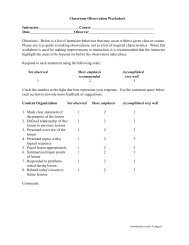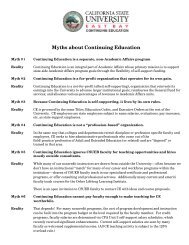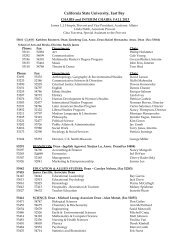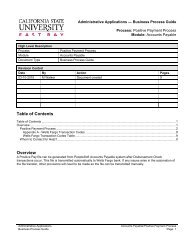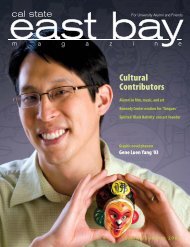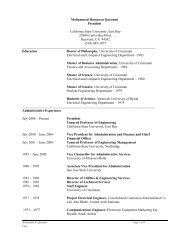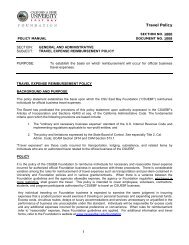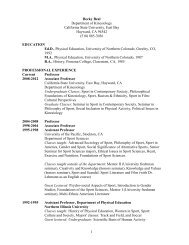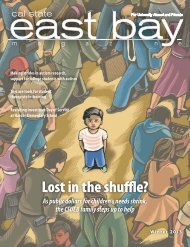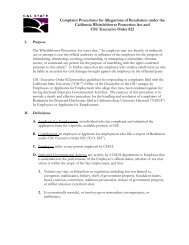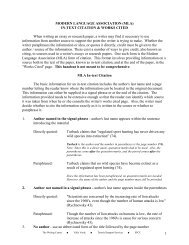Beyond CSI - California State University, East Bay
Beyond CSI - California State University, East Bay
Beyond CSI - California State University, East Bay
You also want an ePaper? Increase the reach of your titles
YUMPU automatically turns print PDFs into web optimized ePapers that Google loves.
friends<br />
a<br />
Bounty<br />
of<br />
Bones<br />
Professor Henry Gilbert catalogs skeletal remains<br />
from around the globe on a first-of-its kind Web site<br />
BY monique beeler<br />
PHOTO UNIVERSITY OF THE PACIFIC<br />
As he scans patches of parched ground in<br />
Ethiopia’s section of the Great Rift Valley<br />
each summer, Professor Henry Gilbert sees<br />
dead people. More accurately, he spots<br />
pieces of their bones — usually fossils<br />
trampled into coin-sized fragments by<br />
millennia of downpours, windstorms,<br />
relentless sun, and ceaseless human and<br />
wildlife migration. Into this skeletal<br />
smorgasbord is mixed a generous helping<br />
of bones from animals that were roasted<br />
over prehistoric campfires, fell to<br />
predators, or simply dropped due to disease<br />
or famine.<br />
As an anthropologist who specializes in forensic<br />
osteology, Gilbert knows at a glance whether a bony<br />
body part he finds once belonged to a non-mammal<br />
or a hominid — one of the family of upright walking<br />
species ranging from ancient human ancestors to<br />
modern people. Marks visible on hominid bones<br />
reveal to Gilbert’s trained eye clues to the individual’s<br />
cause of death, whether from a fall or an ax blow.<br />
Today, through a first-of-its-kind Web site,<br />
www.forensicosteology.com, Gilbert in collaboration<br />
with colleagues at Universidad Nacional Autónoma<br />
de México (UNAM) and others, is providing a<br />
reference tool for colleagues worldwide. Known as<br />
FOROST, the online project provides a database of<br />
images of skeletal remains and case descriptions that<br />
anthropology students, human rights and genocide<br />
investigators, and forensic workers can turn to when<br />
they need help in identifying a bone fragment or<br />
pinpointing a cause of death based on marks left on<br />
skeletal remains. In a Cal <strong>State</strong> <strong>East</strong> <strong>Bay</strong> Magazine<br />
interview, Gilbert discusses his work.<br />
Skeletal remains cataloged on the forensic osteology Web site that CSUEB Professor Henry Gilbert contributes to range from historic to contemporary,<br />
including images of bones damaged by infection, left, Civil War muskets, and stone arrowheads.<br />
26 Cal <strong>State</strong> <strong>East</strong> <strong>Bay</strong> Magazine | SPRING 2011 Cal <strong>State</strong> <strong>East</strong> <strong>Bay</strong> Magazine | SPRING 2011 27



